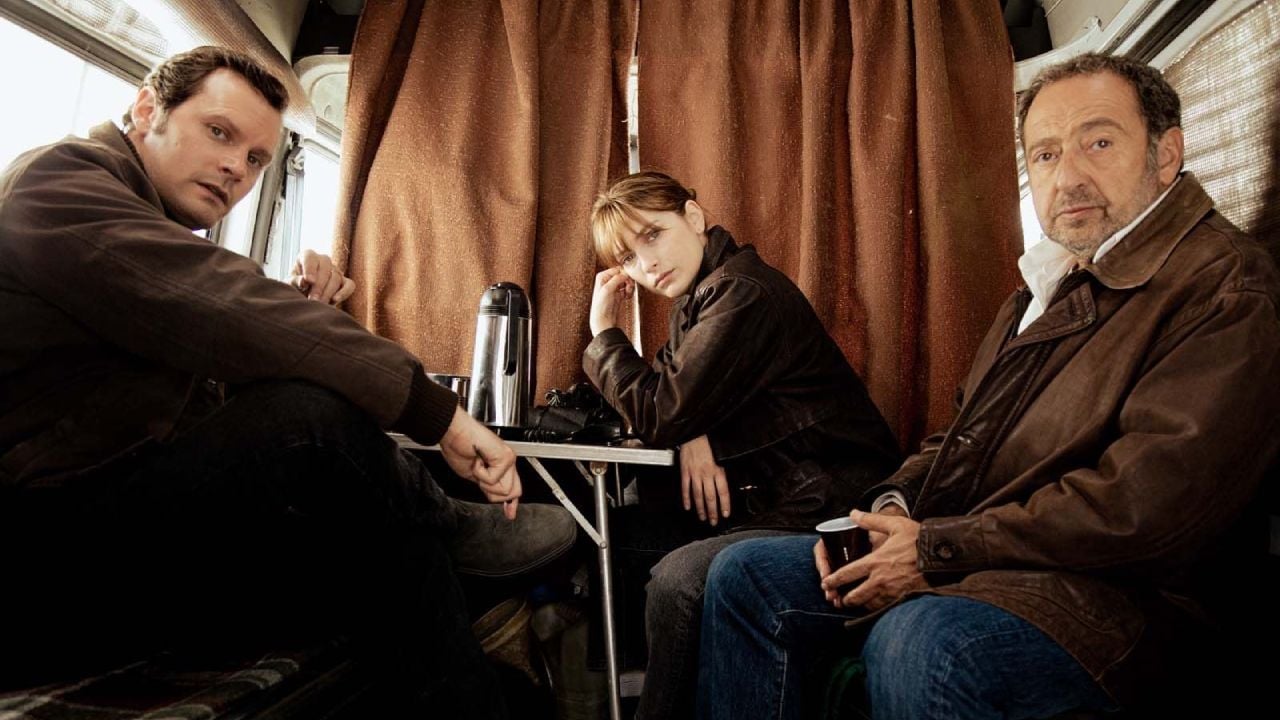Since there are many aspects, there is a need for the individual to identify the best type, based on their specific personality, disorder or problem.
html[data-range=”xlarge”] figure image img.img-59ec26087f6208895fd6b289dac1e5desle9zyr1 { width: 774px; height: 435px; }HTML[data-range=”large”] figure image img.img-59ec26087f6208895fd6b289dac1e5desle9zyr1 { width: 548px; height: 308px; }HTML[data-range=”small”] figure image img.img-59ec26087f6208895fd6b289dac1e5desle9zyr1, html[data-range=”medium”] figure image img.img-59ec26087f6208895fd6b289dac1e5desle9zyr1 { width: 564px; height: 317px; }
Psychotherapy aims to treat problems related to the mind, health and other needs. And those who think that treatments should only be sought when you are going through a delicate and painful moment are wrong.
According to Thaise Löhr Tacla, a therapist psychologist and professor of Psychology at the Pontifical Catholic University of Paraná (PUCPR), it is a mistake to seek help when you have reached your limit. “It’s not just when we talk about illness and mental health. You can seek self-knowledge, understanding, seeing points and things in life that you want to develop,” she says.
However, in order for the patient to feel comfortable and openly talk about any topic, it is necessary to choose an appropriate professional and line of treatment.
Since there are many aspects, there is a need for the individual to identify the best type, whether based on their specific personality, disorder or problem.
“It should be noted that there is no better approach than the other, but ways of understanding the individual. We have more directive approaches and there are some that present more scientific approaches,” Tacla underlines.
In psychotherapy there are three pillars that can help in the choice: behavioral, human existential and psychodynamic.
Within each of these are “sub-classifications” that may further direct each individual to begin treatment. We explain each one below.
behavioral
Behavior analysis
Is based on behaviorism (comes from behavior, which is behavior in English) and with aspects supported by science. It is a perspective that will analyze the behavior of the individual and his interactions with the environment.
A practical example is anxiety on the first day of school. Generally, this line will try to understand why this happened and why the patient had this response to this feeling.
The goal is to help the person find the cause of suffering, identify their own and other people’s behavior to help with coping strategies, and find the function of that fear. He is considered more punctual and directive.
Cognitive Behavioral Therapy (CBT)
This perspective emphasizes the thinking of the individual and how this will affect feelings, emotions and behavior.
The role of psychotherapy is to help the patient understand the resulting actions and beliefs.
It is the most used aspect in North American countries due to its possibility of scientific validation through applied and proven methods.

“The therapist shows these cognitive distortions and, together with the patient, finds alternatives, solutions to his own anguish, showing what is behind a fear.
It teaches the patient to have autonomy to learn to face their own problems, says Lala Fonseca, a psychologist with a specialization in Psychopharmacology at the Hospital das Clínicas of the Faculty of Medicine of the University of São Paulo (FMUSP-HC).
Since this is a more direct approach, it is suitable for those suffering from eating disorders, anxiety, depression, for people who seek interpretation of life situations and who want direction through their answers. Currently, it is the shortest method for solving situations in general.
existential human
Humanist or transpersonal
The therapist acts in search of a welcoming environment in which the individual reaches his qualities and recognizes what his difficulties are.
He proposes that people will only be able to change things when they accept themselves.
It is indicated for problems related to self-esteem, stress and for patients who seek to improve not through their distress, but through positive aspects and points.
phenomenological
This line will focus on the individual as a unique form. He will emphasize his attitudes, try to understand the reason for his existence and ask questions such as: why do I exist, what attitudes do I have towards life?
This also works on values and aspects based on the patient’s existence, without prejudices and generalizations.
Gestalt
Its goal is to provoke insights into the here and now through self-awareness, as well as involving physical, mental and spiritual aspects. It is characterized by the reflection of its own actions and seeks strategies for self-regulation.
The therapist pays attention to speech, tone of voice, gestures, and other body language. This process often causes insights of self-perception.
It works for people who need to see the big picture to understand the result.
Psychodrama
It draws on aspects of theatre, uses drama to stage experiences and presents an approach that aims to save the essence of every human being.
“While psychodrama aims to relive and accept one’s past and even understand the future, the main difference with family constellation is that it still doesn’t ‘resolve’ the ‘trauma itself,'” says Fonseca.
Even with this more playful line, training in psychology is needed to technically assist the individual in resolving traumatic issues, the practitioner emphasizes.
It is indicated for people who find it difficult to explain a certain situation and the discomfort it has caused. Also, aim to understand yourself, others, and your ability to relate to others.
Logotherapy or existential analysis
This type of psychotherapy focuses on finding meaning. It aims to find the motivation and reason why the person is there.
It can help the patient overcome existential crises and answers to deep dilemmas.
“In the pandemic, the search for meaning was saved a lot. It ended up being more important, looking for the motivation of life,” says Tacla.
Psychodynamics
Psychoanalysis
It is an older approach and its strategy is to use free association, talking about itself and without any intervention. By saying what she feels without interruption, the person becomes aware.
It is suitable for people who seek to know their deepest layers and feel comfortable in their absence.
Within psychoanalysis there are also other lines that can be chosen. Are they:
Freudian or orthodox psychoanalysis
It allows the patient to speak freely, usually with their back to the analyst and the analyst, in turn, maintains silence to allow thoughts to flow freely without any interference.
Jungian therapy
Also called analytical psychology, Carl Jung’s therapy aims to work the unconscious and the conscious to bring balance to the external and internal world.
“The strategy of this line is to go to the unconscious. It is understood that the person said something that he did not want to say,” says the PUC-PR specialist.
The patient is free to say what he wants and the therapist can try to understand, symbolically, what his complaints represent.
There’s active imagination, dream interpretation, and sandplay (also called sandplay), a non-verbal method of constructing scenes.
Lacanian therapy
This line of approach emphasizes exploration of the unconscious through speech.
As in orthodox psychoanalysis, the patient must speak freely without being interrupted.
It is very common for the therapist to repeat the lines of the individual so that he can hear himself. It is indicated for people who cope well with limitations.
How to choose the ideal therapist?
When the person decides to start psychotherapy, it is important to seek referrals. The best thing, according to the experts, is to look for some details on the type of practice that this professional exercises, through his publications, speeches in public spaces and developed social projects.

Also feel free to ask what line he follows, if he’ll ask questions, take notes, or let you talk more during sessions.
“The fundamental thing here is to try to have a first experience with the professional to feel if you have been listened to and if you have felt that an initial bond has been formed from which a therapeutic relationship could bear fruit”, underlines Bartholomeu de Aguiar Vieira, professor of Psychopathology, Psychodiagnostic Internships and Personality Assessment at the Center for Biological and Health Sciences (CCBS) of the Mackenzie Presbyterian University (UPM).
There are patients who have taken a year to feel comfortable opening issues related to sexuality, for example, and points where the person himself was prejudiced.
“However, opening up to the therapeutic process is painful, extremely liberating. By recognizing the problems themselves, the patient is freed from anguish. By accepting who we are, we discover where we want to go and have the opportunity to go and what we want to want to do,” underlines Fonseca.
At the beginning it is important to have “trial sessions” and have a first contact with the psychotherapist. They can occur through video calls, phone calls, and in person.
Some even offer free first date consultations, but nothing prevents them from discussing values and knowing how much they charge for the service.
If the person is unable to pay for the sessions, there is also the possibility of social assistance, carried out in the outpatient clinic-school at popular prices and even free.
Source: Terra
Ben Stock is a lifestyle journalist and author at Gossipify. He writes about topics such as health, wellness, travel, food and home decor. He provides practical advice and inspiration to improve well-being, keeps readers up to date with latest lifestyle news and trends, known for his engaging writing style, in-depth analysis and unique perspectives.






